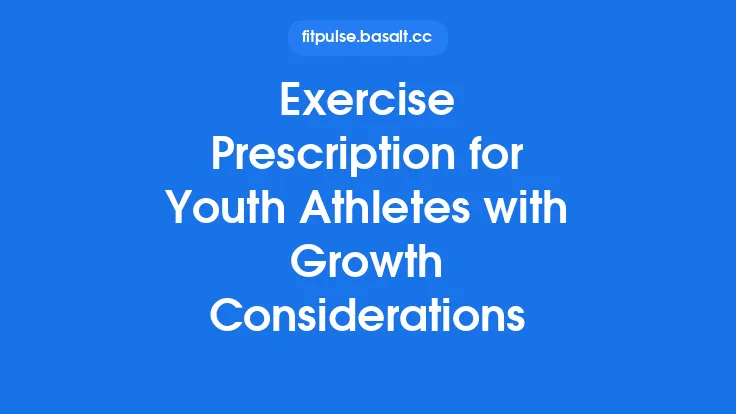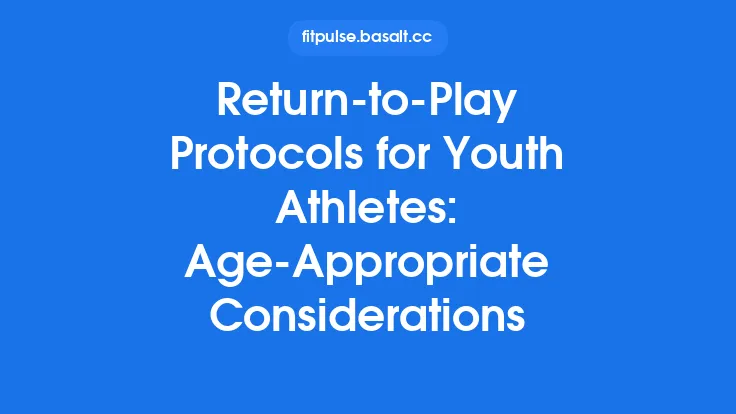When you’re an athlete recovering from an injury, the partnership you build with your physical therapist (PT) can be the single most influential factor in how quickly and safely you return to peak performance. While the exercises, modalities, and timelines are essential, the quality of communication between you and your PT often determines whether those clinical tools are applied effectively. Below is a comprehensive guide to help athletes foster clear, productive, and collaborative dialogue with their physical therapists throughout the rehabilitation journey.
Understanding the PT’s Role and Scope of Practice
Before diving into specific communication strategies, it’s helpful to clarify what a PT does and where their expertise lies. Physical therapists are licensed health‑care professionals trained to:
- Assess musculoskeletal, neuromuscular, and functional impairments using objective measures (e.g., goniometry, manual muscle testing, functional movement screens).
- Diagnose movement dysfunctions and identify contributing factors such as joint restrictions, muscle imbalances, or faulty motor patterns.
- Design individualized treatment plans that integrate manual therapy, therapeutic exercise, modalities, and education.
- Educate patients on injury mechanisms, tissue healing timelines, and self‑management strategies.
Understanding that a PT’s primary focus is on restoring movement quality and function—not prescribing medication or diagnosing medical conditions—helps set realistic expectations and frames the conversation around functional goals.
Establishing Clear Goals from the Outset
1. Share Your Athletic Objectives
Athletes often have specific performance milestones (e.g., returning to sprinting, jumping, or throwing at pre‑injury levels). Communicate these targets early:
- Short‑term goals (e.g., achieving pain‑free range of motion within two weeks).
- Mid‑term goals (e.g., completing sport‑specific drills without compensation).
- Long‑term goals (e.g., competing at the same level as before the injury).
When your PT knows the exact demands of your sport, they can tailor interventions to address the relevant kinetic chain and movement patterns.
2. Align on Measurable Outcomes
Translate abstract goals into quantifiable metrics that both you and the PT can track:
| Goal | Objective Metric | Target |
|---|---|---|
| Restore hip extension | Hip extension ROM (degrees) | ≥ 30° |
| Improve quadriceps strength | Isometric MVIC (Nm) | ≥ 90% of contralateral side |
| Achieve sport‑specific agility | T‑test time (seconds) | ≤ 9.5 s |
Having concrete numbers reduces ambiguity and provides a shared reference point for progress discussions.
Mastering the Language of Rehabilitation
Physical therapists use a blend of clinical terminology and lay explanations. Familiarizing yourself with key terms can prevent misunderstandings:
| Term | Plain‑English Meaning |
|---|---|
| Goniometry | Measuring joint angles with a protractor‑like tool |
| Motor control | The brain’s ability to coordinate muscle activation |
| Tissue loading | Applying stress to tissues to stimulate adaptation |
| Neuromuscular inhibition | Temporary loss of muscle activation due to pain or swelling |
| Functional progression | Gradually increasing task difficulty to mimic sport demands |
If a term is unclear, ask for clarification. A good PT will welcome questions and provide analogies that resonate with your sport.
Structured Communication Techniques
1. The “SBAR” Model (Situation, Background, Assessment, Recommendation)
Originally developed for medical handoffs, SBAR can streamline your conversations:
- Situation: “I’m experiencing mild discomfort in my right knee after today’s drill.”
- Background: “I returned to full training two weeks ago after a meniscus repair.”
- Assessment: “Pain is 2/10 on the visual analog scale, and I notice slight swelling after high‑intensity intervals.”
- Recommendation: “Could we adjust today’s exercise load or add a brief ice protocol?”
Using SBAR ensures you provide essential information efficiently, allowing the PT to respond with targeted interventions.
2. The “Ask‑Tell‑Ask” Cycle
- Ask: Begin by asking a specific question (e.g., “What is the purpose of this eccentric squat?”).
- Tell: Listen to the PT’s explanation, then share your perspective or concerns (e.g., “I’m worried this will aggravate my hamstring strain.”).
- Ask: Follow up with a clarifying question or request for modification (e.g., “Can we reduce the depth for today’s session?”).
This iterative approach promotes mutual understanding and demonstrates active engagement.
Leveraging Technology for Ongoing Dialogue
Modern rehabilitation often incorporates digital tools that can enhance communication:
- Shared Exercise Platforms: Apps that allow PTs to upload video demonstrations, set parameters (reps, tempo), and receive athlete feedback.
- Wearable Sensors: Devices that capture joint angles, loading rates, or muscle activation, providing objective data that both parties can review.
- Secure Messaging: Encrypted portals for quick questions between sessions, reducing the need for unnecessary clinic visits.
When using technology, agree on data privacy practices and ensure both you and the PT are comfortable with the chosen platform.
Providing Constructive Feedback
Your PT’s interventions are most effective when they are responsive to your lived experience. Offer feedback using the “SBI” framework (Situation‑Behavior‑Impact):
- Situation: “During today’s session…”
- Behavior: “I felt the manual mobilization on my ankle was too aggressive.”
- Impact: “It increased my discomfort and limited my ability to complete the subsequent balance drill.”
This format focuses on observable facts and their effects, avoiding blame and fostering problem‑solving.
Managing Expectations and Emotional Factors
Injury recovery can be emotionally taxing. Openly discuss:
- Fear of Re‑injury: Share any apprehensions about returning to high‑impact activities. PTs can incorporate graded exposure techniques to rebuild confidence.
- Motivation Fluctuations: If you’re experiencing low motivation, let the PT know. They can adjust session intensity or incorporate more engaging activities.
- External Pressures: Whether it’s a coach’s timeline or a scholarship deadline, transparency helps the PT balance realistic progress with external demands.
A collaborative mindset acknowledges both the physical and psychological dimensions of rehabilitation.
Coordinating with the Wider Support Team
Athletes often have multiple professionals involved in their care (coaches, physicians, nutritionists). Effective communication with your PT includes:
- Sharing Medical Reports: Provide copies of imaging, surgical notes, or physician recommendations so the PT can align treatment with medical directives.
- Clarifying Coaching Demands: Inform the PT about upcoming training cycles, competition dates, or specific skill requirements.
- Establishing a Communication Chain: Decide who will be the primary point of contact for updates (e.g., the PT may send a brief progress note to the head coach with your consent).
Clear boundaries and consent are essential to maintain confidentiality while ensuring everyone works toward the same goal.
Documentation: Your Personal Rehabilitation Log
Keeping a structured log can reinforce communication and empower self‑advocacy:
| Date | Session Focus | Pain (0‑10) | Swelling (0‑3) | Performance Notes | PT Feedback |
|---|---|---|---|---|---|
| 10/02 | Hip mobility drills | 1 | 0 | Full ROM achieved | Increase tempo next week |
| 10/04 | Single‑leg balance | 2 | 1 | Slight wobble on right | Add proprioceptive cue |
Review this log with your PT regularly. It provides a tangible record of trends, helps identify patterns, and serves as a reference for future goal setting.
Navigating Disagreements Respectfully
Occasionally, you may feel that a prescribed exercise or progression does not align with your perception of readiness. In such cases:
- Express Concern Calmly: “I’m concerned that the current plyometric drill may be too intense for my current knee stability.”
- Request Evidence: Ask the PT to explain the rationale and any supporting data (e.g., “Can you show me the criteria you use to determine readiness for this drill?”).
- Propose Alternatives: Offer a compromise (e.g., “Could we try a lower‑impact version for the next two sessions and reassess?”).
- Seek a Second Opinion if Needed: If disagreements persist, consider consulting another qualified PT or your sports physician for additional perspective.
Respectful dialogue preserves the therapeutic alliance and ensures decisions are evidence‑based.
Continuing Education: Empowering Yourself
While the PT is the expert in movement rehabilitation, athletes benefit from a baseline understanding of injury science:
- Read Peer‑Reviewed Summaries: Look for review articles on your specific injury type (e.g., “Anterior cruciate ligament healing phases”).
- Attend Workshops: Many sports medicine clinics host seminars on topics like “Optimizing Return‑to‑Play Strategies.”
- Ask for Resources: Request handouts or reputable online resources that explain the underlying biomechanics of your condition.
An informed athlete can ask more precise questions, adhere better to protocols, and contribute meaningfully to the rehab process.
Summary Checklist for Effective Athlete‑PT Collaboration
- [ ] Clarify your sport‑specific goals and share them early.
- [ ] Define measurable outcomes to track progress objectively.
- [ ] Learn key PT terminology to reduce miscommunication.
- [ ] Use structured communication tools (SBAR, Ask‑Tell‑Ask).
- [ ] Leverage technology responsibly for data sharing and feedback.
- [ ] Provide constructive feedback using the SBI framework.
- [ ] Discuss emotional and motivational factors openly.
- [ ] Coordinate with coaches, physicians, and other professionals with proper consent.
- [ ] Maintain a personal rehab log to document sessions and symptoms.
- [ ] Address disagreements respectfully and seek clarification when needed.
- [ ] Engage in self‑education to enhance understanding of your injury and recovery.
By integrating these practices into your daily routine, you transform the therapist‑athlete relationship from a one‑directional instruction model into a dynamic partnership. This collaborative approach not only accelerates functional recovery but also equips you with the communication skills that will serve you throughout your athletic career and beyond.





